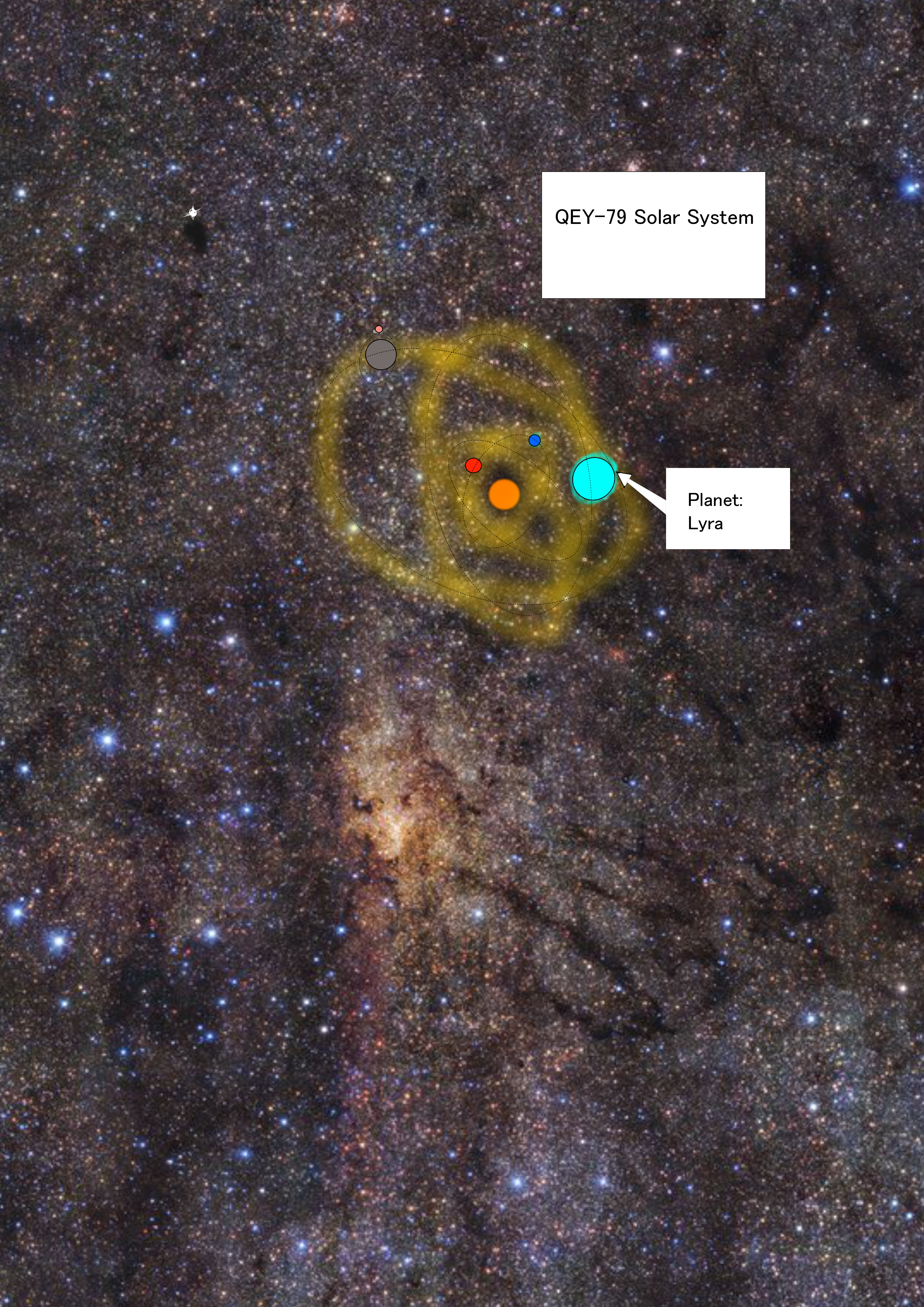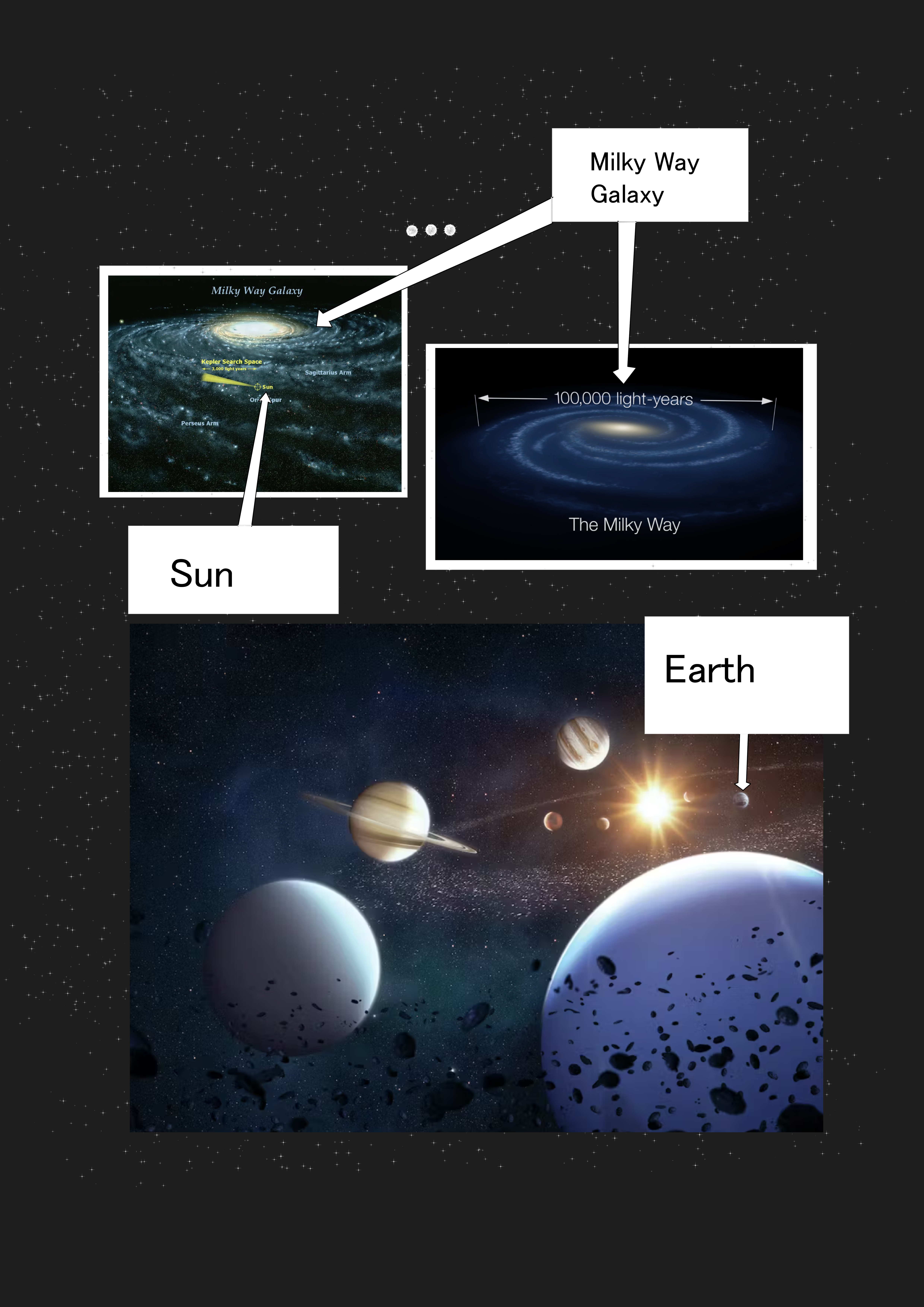Preface
Quantum mechanics, a realm unfamiliar to most, reveals the universe’s smallest building blocks—electrons, protons, photons, quarks, and beyond. Among its wonders is quantum entanglement, a phenomenon where particles weave their destinies across galaxies, forming an intricate connection that defies distance and logic. Bound together, the state of one particle influences its distant partner instantaneously, defying the constraints of space and ordinary understanding. In a vast cosmos with countless galaxies, imagine a world like ours. Enter the QEY-79 system, distant by two million light years—a mirror to our solar system. Lyra, its Earth-like planet, has nurtured life for over 3.5 billion years. Intelligent beings, akin to humans, emerged 50,000 years ago. They’re territorial, driven to eliminate those different from their group to survive. But Lyra’s story twists with its three continents, each birthing distinct species, human-like yet uniquely diverse. Within Lyra’s embrace, three continents—Triak, Keloa, and Pert—shared a union in the cradle of complex life. Millennia flowed, and Lyra’s pulse stirred, orchestrating the subtle ballet of tectonic plates. As the symphony of time played on, the continents danced apart, leaving a tapestry of evolution’s touch.
In this ever-shifting panorama, a unique convergence unfolded. The Canis Sapientis, Panthera Sapientis, and Homo Sapientis—the ancient progenitors—intersected. Their legacy, woven through interbreeding, unfurled into the lineage of Sapiens Venator, Sapiens Lupus, and Sapiens Hominis within the grand tapestry of Hominidae.
As sixty million years passed—a mere heartbeat in Lyra’s existence—the tectonic orchestrations of fate carved destiny anew. Triak, Keloa, and Pert stood as distinct continents, separated by yawning chasms of oceanic abyss.
Through epochs that stretched languidly, life painted its tableau along the coasts. Each of the three, Sapiens Venator, Sapiens Lupus, and Sapiens Hominis, etched their narratives in harmony.
In the ancient forests of Triak, Sapiens Venator, the wise cat-like humans, reigned as masters of strategy, innovation, and fierce determination. Their monumental structures defied nature, aqueducts channeling waters to nurture their civilization. Their empire rose upon the strength of their cunning and resourcefulness. Abundant temples graced their cities, each one a testament to their reverence for their ancestors.
Amid the arid deserts of Pert, Sapiens Lupus, the dog-like humans, flourished as compassionate tribes known for their trustworthiness. Deep within the desert, their elusive kingdom stood, wary of outsiders. Tunneled pathways held their stored water, and their ability to swiftly relocate cities in rotation spoke of their resilience and adaptability. On the outskirts, amidst agrarian lands, they coexisted with other species, a testament to their compassionate nature.
In the realm of Keloa, Sapiens Hominis, the human-like species, thrived with calculated brilliance fueled by greed. Their empire mirrored the grandeur of ambitious kingdoms, yet their hunger for wealth drove brilliant tactics. The kingdoms of Tiberia and Salia, in perpetual war, reaped profits from their greed-driven conflicts, industries intertwined with the art of war itself. The waters that surrounded their fragmented archipelago were both a barrier and a source of sustenance. Their ships, once sophisticated, were stunted by an agreement to not fight through waterways, blunting their seafaring capabilities.
Today, across these age-old lands, echoes of shared origins ripple through species akin to humans. Each thread of evolution, akin to the brushstrokes of an artist, bears the legacy inherited from their lineage. Triak, Keloa, and Pert—fragments of a world where life’s tale was woven—stand as eternal witnesses to the dance of existence, shaped by the gentle hands of time and the enduring rhythms of nature.


